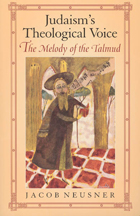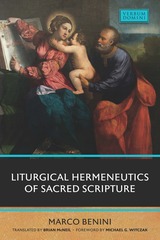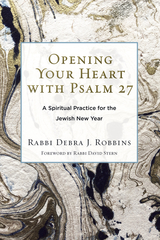4 books about Liturgical use

Judaism's Theological Voice
The Melody of the Talmud
Jacob Neusner
University of Chicago Press, 1995
Distinguished historian of Judaism Jacob Neusner here ventures for the first time into constructive theology. Taking the everyday life of contemporary Judaism as his beginning, Neusner asks when in the life of the living faith of the Torah does Israel, the holy community, meet God? Where does the meeting take place? What is the medium of the encounter?
In his attempt to answer these questions, Neusner sets forth the character and the form of the Torah as sung theology. Israel, the holy community, meets God in the synagogue, while at prayer, and in the yeshiva, when studying the Torah—at the moment in each setting when the Torah is received. In both circumstances people do not read but sing out its words. With the written part of the Torah sung in the synagogue, and the oral part declaimed in centers of sacred learning, music provides the medium for Judaism's theological voice.
Neusner identifies a reciprocal exchange between the holy community Israel and God: Israel sings to God when the Torah is studied, and God sings to Israel when the Torah is declaimed. Through the metaphor of music, Neusner offers an account of how he believes those faithful to the Torah meet God in the Torah, and how they should listen to the melody of God's self-revelation. The result is an original theological reflection that will interest all students of Judaism.
In his attempt to answer these questions, Neusner sets forth the character and the form of the Torah as sung theology. Israel, the holy community, meets God in the synagogue, while at prayer, and in the yeshiva, when studying the Torah—at the moment in each setting when the Torah is received. In both circumstances people do not read but sing out its words. With the written part of the Torah sung in the synagogue, and the oral part declaimed in centers of sacred learning, music provides the medium for Judaism's theological voice.
Neusner identifies a reciprocal exchange between the holy community Israel and God: Israel sings to God when the Torah is studied, and God sings to Israel when the Torah is declaimed. Through the metaphor of music, Neusner offers an account of how he believes those faithful to the Torah meet God in the Torah, and how they should listen to the melody of God's self-revelation. The result is an original theological reflection that will interest all students of Judaism.
[more]

Liturgical Hermeneutics of Sacred Scripture
Marco Benini
Catholic University of America Press, 2023
The purpose of this book is to explore what a liturgical approach to the Bible looks like and what hermeneutical implications this might have: How does the liturgy celebrate, understand, and communicate Scripture? The starting point is Pope Benedict's affirmation that “a faith-filled understanding of sacred Scripture must always refer back to the liturgy” (Verbum Domini 52).
The first part of the book (based on SC 24) provides significant examples to demonstrate: The liturgical order of readings intertextually combines Old Testament and New Testament readings using manifold hermeneutical principles, specifically how the psalms show the wide range of interpretations the liturgy employs. Prayers are biblically inspired and help to appropriate Scripture personally. The hymns convey Scripture in a poetic way. Signs and actions such as foot-washing or the Ephphetha rite enact Scripture. The study considers the Mass, the sacraments and the Liturgy of the Hours.
In the second part, Benini systematically focuses on the various dimensions of liturgical hermeneutics of the Bible, which emerge from the first part. The study reflects the approaches the liturgy offers to Scripture and its liturgical reception. It explores theological aspects such as the unity of the two Testaments in Christ’s paschal mystery or the anamnesis as a central category in both Scripture and liturgy. The liturgy does not understand Scripture primarily as a document of the past, but celebrates it as a current and living “Word of the Lord,” as a medium of encounter with God: Scripture is sacramental.
Liturgical Hermeneutics of Sacred Scripture seeks to contribute not only to the comparison of the Roman, Ambrosian, and Byzantine Rite regarding the Word of God, but most of all to the overall “liturgical approach” to Scripture. As such, it promotes an interdisciplinary dialogue of liturgical and biblical studies.
[more]

Opening Your Heart with Psalm 27
A Spiritual Practice for the Jewish New Year
Rabbi Debra J. Robbins
Central Conference of American Rabbis, 2019

Prayers that Cite Scripture
Biblical Quotation in Jewish Prayers from Antiquity through the Middle Ages
James L. Kugel
Harvard University Press, 2006
In the beginning, prayers were straightforward: people turned to God and asked for help. By the closing centuries of the biblical period, however, a change became observable. Prayers now began to include references to Scripture--allusions to biblical stories in which God had answered a prayer, or the evocation of specific biblical passages, or the recycling of biblical phrases in the creation of a new prayer. This process, the "Scripturalization of prayer," grew in intensity and refinement as Judaism moved from the biblical period to early post-biblical times. It is attested throughout the prayers found in the biblical apocrypha and pseudepigrapha, the Dead Sea Scrolls, and early piyyut, and it continued apace in the liturgical compositions of the Geonic period and still later times. This collection of essays seeks to chart the main lines of the Scripturalization of prayer over this entire period.
[more]
READERS
Browse our collection.
PUBLISHERS
See BiblioVault's publisher services.
STUDENT SERVICES
Files for college accessibility offices.
UChicago Accessibility Resources
home | accessibility | search | about | contact us
BiblioVault ® 2001 - 2024
The University of Chicago Press









